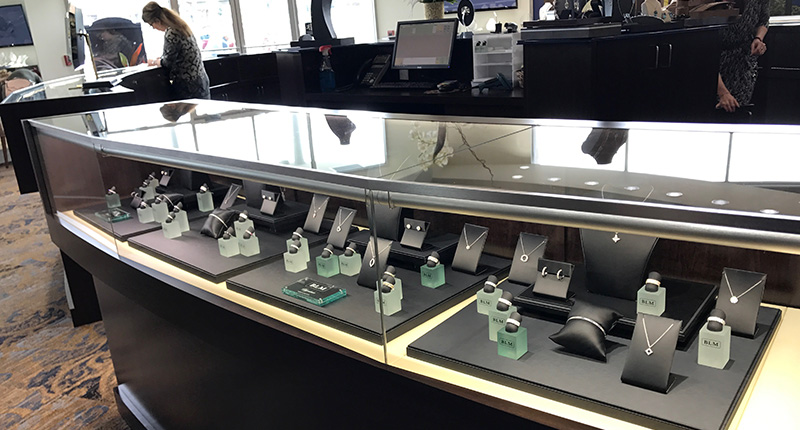Carlos Jose Hernandez and Joshua Zuazo were sentenced to life without the possibility of parole in the 2024 murder of Hussein “Sam” Murray.
Squirrel Spotting: Turn Your Store Upside Down
Change can be more powerful than you think, columnist Peter Smith writes.

Do you ever become frustrated wondering why your salespeople seem always to want to sell what you don’t have in stock, while seemingly ignoring what you do have in stock? As it turns out, there may be a psychological reason for that.
In “The Power Of Moments,” Chip and Dan Heath wrote about the idea that we become inured to repetition and sameness and that by mixing things up, it can have an affect far beyond what might reasonably be expected from a given change.
One of the examples that the authors referenced was a study where subjects were shown images of a simple brown shoe. Over and over the image of the shoe continued to be shown and, when the subjects were sufficiently accustomed to the routine and repetition of the same image, they were then shown a single image of a clock, inserted within the cycle of brown-shoe images.
The Heaths wrote that when the subjects later were interviewed by the researchers (Vani Pariyafdath and David Eagleman of Baylor College of Medicine), they gave infinitely more weight to the image of the clock, believing it had been on the screen far longer than it actually was.
What the subjects were really responding to was the novelty, the change, the picture of the clock represented. The researchers referred to this as “the oddball effect.” They had become so conditioned to the routine that they unconsciously craved change, and they were willing to afford a good deal more benefit (more time on the screen) to the different image (the clock) than was warranted because they were hungry for change.
In considering situations in our business where we might insert our picture of a clock, one of the most obvious and least-practiced strategies is turning your retail store upside down. I don’t mean literally turning the store upside down (very difficult to do, unless you’re on a ship and then not advised if you are), but metaphorically breaking the pattern of sameness and predictability that can result in salespeople seeing products as, well, brown shoes.
For most stores, there is an understandable pattern and predictability to how things are set up.
If
There are very pragmatic considerations for setting the store up the way we do. Some of those might include ease of set-up and breakdown at the beginning and end of the day. The familiarity can also help your team to feel comfortable in their environment, and that itself helps instill confidence and ease of transaction for your customers. There’s nothing quite like the disorientation one feels when you first start in a new store, thinking that you might never remember where everything is.
There are also security benefits to having a consistent and obvious layout; “Hey, did anyone see that diamond and tanzanite ring that was here?” If you knew that it was always in a specific spot, you are more apt to notice when it is missing.
Familiarity, however, can also be a very dangerous drug, and it is all the more so in jewelry stores. The last thing we can afford in an emotion-centric business is apathy or boredom. We can marry our own biases and seek only those products that appeal to us, while ignoring a great many products that have been relegated unconsciously in our minds and peripherally in our showcases.
Kit Yarrow wrote in “Decoding the New Consumer Mind” that, “Products located in the center of a horizontal display get longer looks and are more likely to be chosen than those on the left and right.”
That means that something as simple as how we choose to merchandise our cases can help to cement customers’ and employees’ views of a given product. If the products are typically merchandised on the ends of the cases, they are more likely to be relegated to the nether regions of our minds also.

Making big changes is no small task. There are endless reasons and rationalizations for not doing it, or for postponing it. There could be signage affixed to walls, duratrans dedicated to specific brands or categories, in-case branding or color-schemes that can play havoc if changed, etc. Or, maybe you just don’t want the hassle of having to do it.
Making the big change, however, can help to reshape the mindset and revitalize the energy of your team, as it forces them to reconsider their conventions and routines. It can also delight and surprise your customers. My wife told me the other day that a key part of the Wegmans strategy is to move things around on a regular basis and surprise their customers.
Some members of your team may fight the changes and, if you really get after it, you might have to put in some extra hours to make it happen. You might even question your own sanity as you plan and execute it. However, a job well done will cast your store in an entirely new light and it will create that “oddball effect” for your staff and for your customers that Dan and Chip Heath wrote about in their book. It’ll break the monotony of the endless brown shoe images and force people to view things in a new light.
There’s no better way to start the year than by taking the conventional, the predictable, and the routine and messing it up.
Pull your team together and tell them that the meeting is designed to decide HOW you will do it, and not whether you will do it. And have some fun while you’re at it!
Happy New Year!
Peter Smith is president of Vibhor, a public speaker and author of “Sell Something” and “Hiring Squirrels.” He spent 30 years building sales teams in retail and wholesale and he can be contacted at dublinsmith@yahoo.com, peter@vibhorgems.com, or on LinkedIn, Facebook or Twitter.
The Latest

Yood will serve alongside Eduard Stefanescu, the sustainability manager for C.Hafner, a precious metals refiner in Germany.

Set in a Tiffany & Co. necklace, it sold for $4.2 million, the highest price and price per carat paid for a Paraíba tourmaline at auction.

How Jewelers of America’s 20 Under 40 are leading to ensure a brighter future for the jewelry industry.

The jeweler’s “Deep Freeze” display showcases its iconic jewelry designs frozen in a vintage icebox.


Take luxury gifting to new heights this holiday season with the jeweler’s showstopping 12-carat sphene ring.

This year's theme is “Unveiling the Depths of the Ocean.”

Roseco’s 704-page catalog showcases new lab-grown diamonds, findings, tools & more—available in print or interactive digital editions.

In its annual report, Pinterest noted an increase in searches for brooches, heirloom jewelry, and ‘80s luxury.

Starting Jan. 1, customers can request the service for opal, peridot, and demantoid garnet.

The new catalog features its most popular chains as well as new styles.

The filmmaker’s personal F.P. Journe “FFC” prototype was the star of Phillips’ recent record-setting watch auction in New York.

The new location in the Design District pays homage to Miami’s Art Deco heritage and its connection to the ocean.

Inflations, tariffs, and politics—including the government shutdown—were among consumers’ top concerns last month.

“Longtime favorite” presenters, as well as first-time speakers, will lead talks and workshops at the annual event in Tucson next year.

Silas Smith of Meridian Metalworks won the challenge with his pendant that blends Australian and American landscapes.

The sale of the 31.68-carat, sunset-hued stone was part of Sotheby’s first series of events and auctions in Abu Dhabi.

Most customers who walk into your store this month have made up their minds. Your job is to validate their choice, Emmanuel Raheb writes.

The collection features characters and motifs from Ukrainian folklore, including an enchanted mirror and a magic egg.

MatrixGold 3.11, the newest version of the jewelry design program, offers more flexibility, precision, and creative control.

The pavilion will be part of the 2026 JA New York Spring show, scheduled for March 15 to 17.

Kadet, a 1994 National Jeweler Retailer Hall of Fame inductee, helped grow the family-owned retailer in the Chicago area and beyond.

Billed as the world’s smallest wearable, Lumia Health’s new smart earrings have a health tracker subtly embedded in the back.

Don’t let those with December birthdays feel blue. Help them celebrate their month with blue zircon, turquoise, and tanzanite.

The new pink sapphire version of the piece dances with its wearer in the brand’s “Icons After Dark” holiday campaign.

A choice that’s generated a lot of commentary, Pantone says “Cloud Dancer” marks a fresh start and encourages relaxation and creativity.

The manufacturer’s holiday campaign features a gift guide filled with trending designs and jewelry that can be personalized.



























